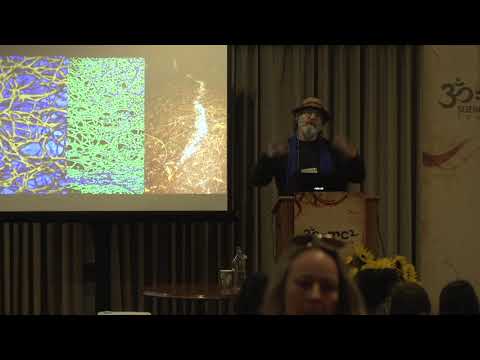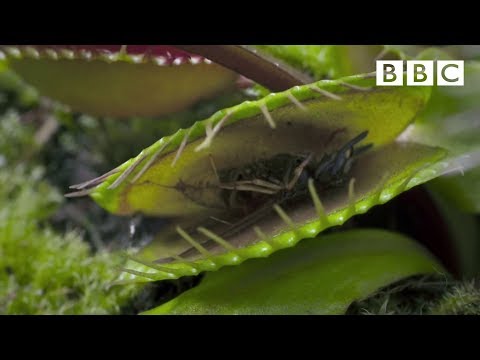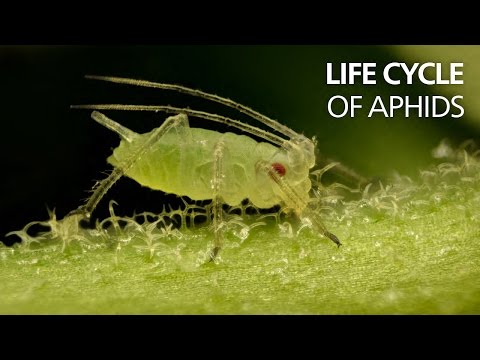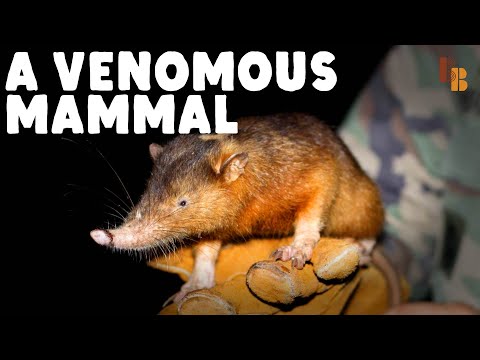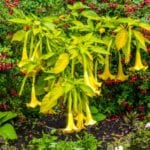At ground level, though, gardens can look like battlefields- with plants, insects, small birds and mammals all jostling for space and for food. To survive in the garden ‘jungle’, you have to make use of anything at your disposal- including some targeted chemical weapons. Top 10 Places You Don’t Want To Visit
10 Tree-killing fungi
We do associate many fungi with poison, which is entirely fair because a lot of toadstools and mushrooms contain highly toxic chemicals (and they have associated scary names, like the ‘Death cap’ and ‘Satan’s bolete’). These poisons are a defence mechanism, discouraging insects and mammals from eating the fungus. Some fungi, however, are a bit more proactive in their use of chemical warfare. An example is the bracket fungus (Fomitopsis betulina), which grows on birch trees. If the tree is weakened for any reason, the fungus starts to produce digestive enzymes that break down the material inside the tree; the fungus itself can then feed on the broken-down tissue material. It’s not all bad, though; some of the other chemicals found in the ‘brackets’ (the disc-shaped structures that sprout out from the infected tree) are actually useful for humans, being antiseptic and anti-inflammatory. This type of fungus has been used in some alternative medicines, and was found among the possessions of a 5000 year-old mummy in the Alps, leading to speculation that he used the fungus for medicinal purposes.
9 Insects as a weapon of attack
Another example of a fungus that actively influences its environment is the sac fungus (Ascomycota), which affects elm trees. This fungus makes use of elm bark beetles, which lay eggs in dying elm trees. If the fungus is present, it creates a lot of spores which stick to the young beetles, which then carry it to other trees. As the young beetles feed on healthy trees, the fungus spores get lodged into the tree, especially infecting the system that the tree uses to transport water and nutrients up the tree from its roots. This is fatal; as the tree can no longer sustain itself, its leaves begin to turn yellow and shrivel all year round (not just in autumn) and its shoots begin to die back. This ‘Dutch elm disease’ is now widespread across Europe and North America and has killed a large percentage of the world’s elm trees (the name is actually a nod to the fact that it was first identified and studied in the Netherlands). The story does not end there, however; some trees seem to have resistance to the disease, such as the European White Elm (Ulmus laevis), which synthesises a chemical called Alnulin in its bark. The elm bark beetles appear to dislike the bark of trees that contain Alnulin, so these elms escape infection. Natural chemical defences may be the key to resisting Dutch Elm disease.
8 The wood-wide web
Despite the previous two items on this list, fungi are not all bad for garden and woodland plants, in fact in most cases they are beneficial. The mushroom or toadstool that you see above ground is actually only a small part of the fungus; a large part of its mass is actually a big network of thin root-like structures underground. This network is called a mycelium, and is very favourable for plants in its vicinity, doing good work such as helping to decompose dead leaves and wood, enriching the soil, and even enhancing trees’ immune systems by triggering the production of defensive chemicals. Recently, however, researchers have found that the mycelium is even more useful than this, sometimes in some quite strange ways; it can be used as a sort of communications network (hence the nickname, the ‘wood-wide web’. This communication can be a simple transfer of nutrients from one tree to the next, but more complex interactions are possible- if some plants in the network are under attack (for example, by aphids) other plants will automatically produce defensive chemicals to fend off a potential predator. The full extent of chemical signalling that can take place is still not fully understood.
7 Insects that are good at manufacturing chemical weapons
Chemical warfare in the garden is not limited to fungi and trees, however; there are a wide variety of insects that are good at producing toxic substances to kill or annoy their predators. Ants are an obvious example of a type of insect that does this; there are over 12000 species of ants in the world, spread across most of the continents, and between them they have an array of interesting chemical defences. Some of the more exotic ones are found in Central America, including the bullet ant (Paraponera clavata) which is said to have an intensely painful sting as it injects poneratoxin into the wound (this chemical is a fairly powerful neurotoxin). However, it isn’t just the exotic species that have chemical means to defend themselves; the common black garden ant (Lasius Niger) uses formic acid as a weapon.
6 Plants manufacture natural insecticides
Left to themselves, insects will munch through a huge quantity of plant matter. Most plants can’t move to defend themselves or kill the insects (with the exception of a few carnivorous plants like the venus flytrap…) so it is no surprise that some plants have evolved chemical defenses. Of course there are the obvious candidates like deadly nightshade and poison ivy, which do contain some very intense toxins, but actually even some of our more unassuming species of garden plants can produce chemicals that are toxic enough to deter insect predators. An example is the humble mint plant- for humans, it makes a tasty sauce to go with your lamb roast, but from the point of view of an insect it produces a cocktail of toxic chemicals. The most powerful of these is a chemical called pulegone that can damage the nervous system of creatures that come into contact with it. Watch this video on YouTube
5 Survival strategies of aphids
Aphids are interesting little critters that are generally not favoured by gardeners- they can weaken plants by feeding on their sap, damage new growth, and spread viruses from plant to plant. They are part of the food chain though, so there are a number of natural aphid predators (such as ladybirds and wasps); however, in some situations the number of aphids can become uncontrolled and then considerable damage can be done to the plants they are feeding on. The aphids have quite a nifty chemical tactic, which is to excrete honeydew; this is a sugary liquid made from the plant sap that they are feeding on. The honeydew attracts ants, which like the honeydew so much that they display really protective behaviour towards the aphids- they have been known to fend off aphids’ natural predators, and even to move aphids from wilting plants on to fresh new plants so that they can feed.
4 Aphids don’t have it all their own way
However, despite their symbiotic relationship with ants, aphids do face some chemical dangers in the garden. Strong-smelling plants, such as garlic and onions, seem to affect certain species of aphids. Alliums such as garlic contain a complex mixture of sulphur-containing chemicals, and it seems likely that these change the aphids’ behaviour by e.g. masking the smell of the plants that the aphids would prefer to feed on. Watch this video on YouTube Some plants, though, take a different tack and instead of producing chemicals to repel the aphids themselves, they produce chemicals to attract creatures that are natural predators of aphids. For example, chamomile flower buds produce a volatile compound that is attractive to ladybirds. Selecting the correct plant to attract aphid predators is a complex task, and there is some debate on whether this is an effective method of pest control.
3 The protein chemistry of spiders
Spiders are good at protein chemistry- the silk that makes up their webs is basically made up of very long protein molecules that are packed together to make a fibre. Proteins themselves are made up of many small molecules (amino acids) and the spider is able to vary which amino acids predominate in one particular strand of silk. In this way, they can make some of the strands of silk tough (to hold the web together) while other strands are more stretchy (to effectively capture and hold prey after it flies into the web).
2 Do birds rely on chemical signals?
If small birds are attracted to your garden, that’s a good sign, because it means there are plenty of bugs for them to eat. It used to be assumed that birds had no use for a sense of smell; surely they sense both prey and predators by vision and hearing only? However, more recently researchers have suggested that in some birds, smell is in fact a useful sense. Starlings and blue tits have been known to add the leaves of aromatic plants to their nests, and it is suggested that they select which plants to use based on their sense of smell; but are these plants useful to deter predators or because chemicals in these plants keep bacteria in the nest under control?
1 Venomous mammals
Very few mammals manufacture poisons, because they more usually disable their prey with claws or teeth; however, there are a few examples of venomous mammals. One of the more surprising is the European mole, which is often thought of as a pest when it arrives in a garden (somewhat unfairly, because it does do some valuable jobs in the garden, such as aerating the soil as it digs). We think of moles as cute furry little creatures that eat earthworms and other bugs, but their eating habits are actually far more interesting (and gruesome). Their saliva contains a toxin that can paralyse their prey. The mole then takes its still-living, incapacitated prey down into its underground tunnel network and stores it in a kind of earthworm larder to eat later. The European mole is the only one so far known to display this behaviour, although certain types of shrews can also deliver venomous bites to prey species. Watch this video on YouTube


